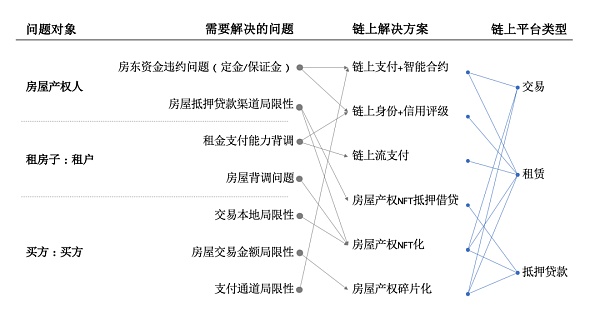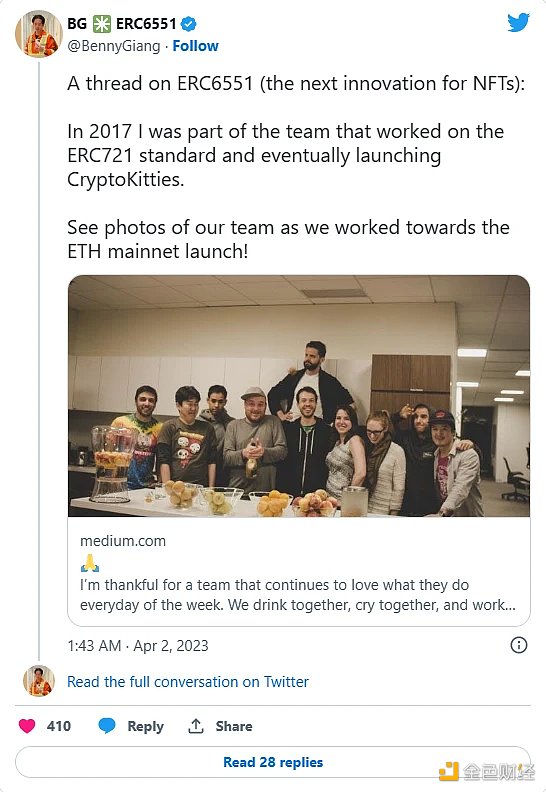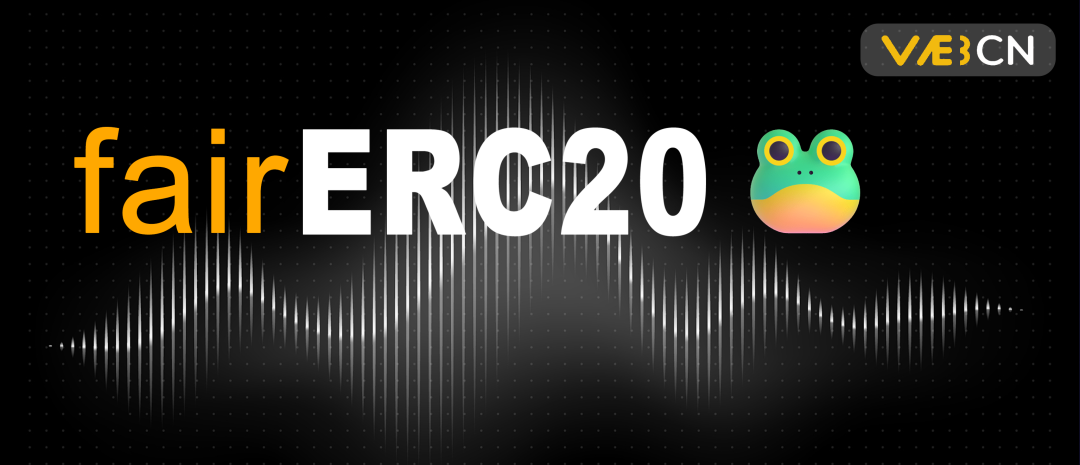Understanding the Equity Staking Mechanism of Blockchain, Oracle, and DeFi in one article
Understanding how Blockchain, Oracle, and DeFi use equity staking.Staking typically refers to locking up cryptocurrency as collateral to secure a blockchain network or smart contract protocol. Staked cryptocurrency assets are often tied to DeFi liquidity, yield rewards, and governance rights. Staking cryptocurrency involves locking tokens on a blockchain network or protocol to earn rewards, and these tokens are used to provide critical services for users.
This article will delve into the underlying logic, operation mechanism, and application scenarios of cryptocurrency staking. In addition, this article will compare the staking mechanisms of oracle networks with the existing blockchain networks.
Blockchain Staking Mechanism
To ensure the security and high Byzantine Fault Tolerance level of a blockchain, it is necessary to establish an anti-Sybil attack mechanism to prevent a small group of nodes from attacking the network. If a blockchain has weak anti-Sybil attack capabilities, it may suffer a 51% attack. A 51% attack refers to a small group of nodes colluding to launch malicious attacks, such as rewriting blockchain history or manipulating users.
A block contains a set of user transactions, which are collectively verified by nodes during the process of updating the blockchain ledger. Each block not only contains this new set of transaction data, but also the hash value of the previous block, and all blocks are concatenated in chronological order using encryption technology, hence the name blockchain (i.e. a chain of blocks). Validators/miners are responsible for creating blocks and submitting them to the blockchain network. If the blocks they submit are deemed valid by the majority of validating nodes/miners and full nodes, they will be added to the ledger.
- How to find the address of a whale that earned 50 times in 3 days using existing resources?
- Analysis of Beijing’s Internet 3.0 White Paper (Full Text Included): Separating from Web 3.0, Focusing on Artificial Intelligence and Metaverse
- Blockchain Capital: Why did we lead the investment in Worldcoin? We believe it will become the largest gateway to the crypto world.
Proof of Stake (PoS) is an anti-Sybil attack mechanism on the blockchain. Validators must stake tokens in the network to have a chance to add new blocks to the chain. On PoS blockchains, anyone who stakes a certain amount of native tokens can join the network as a validator (staker) and produce blocks. The number of tokens staked by validators or the number of validator nodes operated by a user typically determines their probability of being selected as a block producer. In other words, the more tokens staked or validator nodes controlled, the more likely they are to be selected as a block producer.
When a validator successfully creates a valid block, they typically receive staking rewards and a portion of user transaction fees from the protocol. To reduce malicious behavior, PoS blockchains often adopt a punishment mechanism. Under this mechanism, if a validator violates protocol rules, they will have a portion or all of their staked tokens confiscated. In some PoS blockchains, if a node goes offline or the block-producing node fails to produce blocks normally, their staked tokens will also be confiscated.
Three types of blockchain staking: Proof of Work (PoW), Proof of Stake (PoS), and Delegated Proof of Stake (DPoS)
PoW blockchain’s anti-Sybil attack mechanism requires miners to compete with each other by solving computational problems, which is the mechanism adopted by Bitcoin blockchain. That is, miners need to generate a valid hash value based on information in a block. The first miner to solve the computational problem, submit a valid block, and obtain network consensus will receive a reward. The Bitcoin blockchain automatically adjusts the difficulty of the computational problem every 2016 blocks (approximately every two weeks) to ensure that an average of one block is produced every 10 minutes. Difficulty is usually adjusted based on the number of participating miners (i.e., computing power). If the number of miners increases, the difficulty will also increase accordingly to maintain the decentralization of the network.
In the PoW mechanism, the probability of becoming a block-producing node is proportional to the node’s computing power consumption. Therefore, although PoW blockchains do not have an explicit staking mechanism (i.e., an explicit staking mechanism refers to users locking cryptocurrency in a smart contract and being confiscated if they violate the rules), they do have an implicit staking mechanism because nodes not only hold native tokens of the network but also usually spend money on expensive hardware to expand computing power to compete for block rewards. Usually, this hardware cannot be used across different blockchains. If miners cannot obtain income through mining rewards, then the cost they spend on equipment and electricity is in vain. If network security cannot be guaranteed, the market value of mining equipment and native assets will also decline, indirectly causing economic losses.
Although Bitcoin has not established a traditional staking mechanism, it has adopted some implicit staking mechanism. Miners must strive to maintain network security in order to maintain Bitcoin’s high value and achieve profitability.
The anti-witch attack mechanism of PoS blockchain replaces hash calculations with cryptocurrency equity pledges. In other words, in the PoW mechanism, miners compete for computing power, while in the PoS mechanism, validating nodes compete for the amount of funds. One significant difference is that in each round of PoW blockchain, all miners have the opportunity to create a block, while in PoS blockchain, validating nodes are usually randomly assigned to create a block based on the pledge-weighted random number. Ethereum is currently implementing “The Merge” plan to transition from PoW to PoS.
PoS blockchain uses explicit pledge mechanism, and validating nodes pledge a certain amount of tokens as collateral. If a node violates the protocol rules, the collateral will be confiscated.
PoS has a subclass called delegated proof of stake (DPoS), which allows token holders to delegate tokens to validating nodes, separating token pledgers and validating nodes. This allows token holders to participate in the block creation process and receive block rewards, rather than having them monopolized by validating nodes. However, this mechanism has a flaw, which is that the number of validating nodes will be fewer than in a traditional PoS network, because in a PoS network, each pledger must run their own validating node client.
Equity Pledge Reward
Stakers in the blockchain network are economically incentivized to create valid blocks, and nodes receive transaction fees and block rewards. That is, validating nodes that successfully create or verify blocks will receive newly issued cryptocurrency.
Different protocols calculate equity pledge rewards differently, usually taking into account factors such as the number of tokens pledged by each validating node, the length of time the validating node has been pledged, the total number of tokens pledged in the network, and the proportion of token flow to the total supply. PoS blockchain will use different methods to determine the distribution of rewards, but in general, the rate of return will be determined by the total amount of tokens pledged in the network.
In some PoS systems, token holders can pool their resources (i.e. equity pledge assets) together to increase their chances of being selected and winning equity pledge rewards. If there is an equity pledge threshold in the network, users’ token quantities can participate in the PoS blockchain through the equity pledge fund pool, even if they do not reach the minimum threshold. Rewards will be proportionally distributed to pledgers and the fund pool’s operating team.
Staking in DeFi
Staking is also common in decentralized finance (DeFi) protocols. In DeFi, staking is not for securing blockchain mining, but for achieving a specific goal by locking tokens in a DeFi protocol. Although the term “staking” deviates from its original meaning in this context, it has become a commonly used term in the industry.
Here are some examples of staking in DeFi:
-
Providing insurance for protocols – Decentralized lending protocols like Aave use a staking mechanism to incentivize liquidity. AAVE token holders can stake their tokens in the protocol’s safety module to provide additional security and insurance for depositors in the event of a black swan event. Stakers can also earn rewards from the protocol.
-
Governance – Decentralized exchange (DEX) Curve uses a staking mechanism to coordinate long-term economic incentives for liquidity providers and governance participants. CRV token holders can “vote-lock” their CRV and receive voting-delegated CRV (veCRV), with longer lock-up periods resulting in more veCRV. Token holders can vote on protocol proposals via vote-locking and determine the CRV yield in a particular liquidity pool, as well as earning a portion of the protocol’s trading fee revenue.
-
Providing liquidity – Decentralized liquidity protocol Synthetix uses a staking mechanism to provide collateral for synthetic assets. Synthetic assets are pegged to the price of an asset on a certain chain and are collateralized by staked SNX. Stakers of SNX receive economic incentives, provide liquidity to the protocol, and earn staking rewards and transaction fees generated by dApps like Kwenta that use the Synthetix protocol.
-
Token issuance – DeFi protocols like Alchemix use a staking mechanism to issue tokens to the community and incentivize liquidity in the decentralized ecosystem. Users can stake tokens in Staking Pools contracts to earn LCX tokens.
Comparison of Staking Mechanisms Between Blockchain and Oracle Networks
The role of the staking mechanism in decentralized oracle networks is fundamentally different from that in blockchain networks.
Generally speaking, blockchain provides a service (i.e., block validation) that follows a predefined and widely recognized set of rules. Therefore, blockchain adopts this staking mechanism to ensure the security of the entire network.
Proof-of-Stake (PoS) blockchains use staking mechanisms to incentivize honest nodes to reach consensus on the validity of blocks and a series of transactions. Punishment mechanisms for validating nodes include but are not limited to:
-
Cryptographic technology—a validating node generates two different blocks at the same block height and signs repeatedly (e.g., signs multiple blocks).
-
Internal state—the generated block contains invalid transactions, and the transaction amount does not exist in the account (e.g., double-spending transactions).
-
Internal network rules—the block created by the validating node violates the protocol rules (e.g., the number of tokens minted exceeds the block reward limit).
In decentralized oracle networks, the significance of the staking mechanism is not to ensure the creation of valid blocks, but to ensure that reliable and tamper-proof oracle reports can be generated, and that the reports accurately reflect the state of the external world. Since the off-chain world itself is full of variables and uncertainties, different users may have different punishment mechanisms for oracle nodes. In addition to the aforementioned cryptographic technology, internal state, and internal rules, other punishment mechanisms need to be established. A Service Level Agreement (SLA) is signed between the oracle users and the oracle network, which stipulates the penalty conditions, reward and punishment mechanisms, and which verification scheme to use to trigger the punishment mechanism.
Blockchain verifies and reaches consensus on the block where the transaction is located, while the oracle network reaches consensus on external data and off-chain calculations.
Implicit staking mechanisms include the reputation system of oracle nodes and future fee revenue opportunities; in explicit staking mechanisms, nodes need to collateralize margin according to the terms of the smart contract in the Service Level Agreement. If the terms are violated, the collateral will be confiscated.
It is worth noting that blockchain, DeFi, and oracle networks’ equity staking mechanisms have a common feature, which is that users who stake tokens to ensure the normal operation of the service can share a portion of user transaction fees. As the number of protocol users continues to increase, stakers can receive more and more transaction fees.
Future Development Prospects of Equity Staking
This type of cryptographic economic model in smart contract ecosystems is becoming increasingly mainstream and can be directly applied to oracle networks. The initial purpose of equity staking was to ensure the security and economic sustainability of blockchains, and it is now widely applied in DeFi protocols, responsible for managing liquidity and protocol governance.
We will continue to update Blocking; if you have any questions or suggestions, please contact us!
Was this article helpful?
93 out of 132 found this helpful
Related articles
- Blockchain Capital: Why did we lead the investment in Worldcoin?
- Understanding the Launch Rules of Neutron, the First Consumer Chain in the Cosmos Ecosystem
- Worldcoin has completed a $115 million C round of financing, led by Blockchain Capital.
- How can we determine whether a stablecoin is an official native asset after Multichain’s shutdown exposed asset security issues?
- Summary of Hong Kong Securities and Futures Commission’s Cryptocurrency Consultation: Retail Trading, Temporary Ban on Stablecoins, and Inclusion in Indices are Minimum Standards
- LSD injects a shot in the arm for blockchain. What risks should users pay attention to?
- In-depth analysis of the new Starknet client Beerus: How to achieve trustless state verification?






